Content
Anafalis is a common herb of the Astrov family. It is widely known for its decorative and medicinal properties. Planting and caring for pearl anaphalis is not burdensome for any gardener. This is due to the fact that the flower quickly adapts to environmental conditions and is not sensitive to adverse factors.
Description
Anaphalis pearl (Anaphalis margaritacea) is a herbaceous perennial. This is a low-growing plant, the height of which reaches a maximum of 50 cm.
Anafalis has a strong and deep root system. This is due to the need for moisture extraction during dry periods.
The stem of anaphalis is erect, slightly branched in the upper part. It is covered with numerous pointed long leaves of light green color.
Anafalis has a long flowering period, it lasts about 2.5 months.
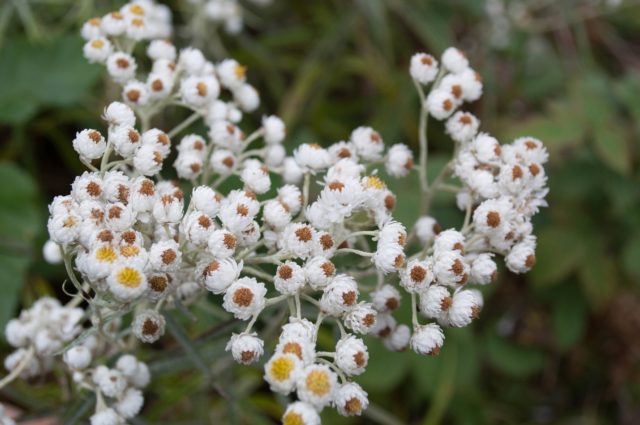
Flowering begins in mid to late July and can last until October
During this period, numerous apical inflorescences appear on the shoots. They consist of flowers in the form of baskets, of white elongated petals and a light core - yellow or orange. The diameter of the flowers is up to 0.8 cm. This type of anaphalis was named "pearl" because of the corresponding color of the pre-flowers. Decorativeness remains until late autumn.
Flower description:
Where grows
Under natural conditions, pearl anaphalis grows in East Asia and North America. The flower prefers loose light soils with little moisture. Dry weather is not an obstacle to regular, abundant flowering.
Anafalis pearl tolerates low temperatures, winter and does not require special preparation and shelter.
Varieties
Anafalis pearl is a variety that was introduced from North America. Domestic breeders have developed several new varieties. They are distinguished by their high adaptive ability due to which they quickly adapt to growing conditions.
Popular varieties:
- First snow (Neuschnee).
- Silver wave.
- Silver rain (Silberregen).
- Summer snow (Sommerschnee).
Anafalis pearl is considered the most widespread variety in Russia. Due to its ease of growing and care, the flower is in steady demand among domestic gardeners.
Growing from seeds
Sowing anaphalis for seedlings is carried out in early April. For cultivation, it is recommended to use separate small containers or special cassettes.
The soil base for pearl anaphalis must be nutritious. Peat mixed with compost and cleaned garden soil is ideal for this purpose. It is recommended to disinfect the soil before sowing by keeping it in the oven for 2-3 hours at a temperature of 80 degrees.
Planting stages:
- Pour a layer of river sand 0.5-1 cm into a container on the surface of the soil mixture.
- Level the surface.
- Place seeds on top.
- Spray from a spray bottle.
- Cover the container with foil or glass.
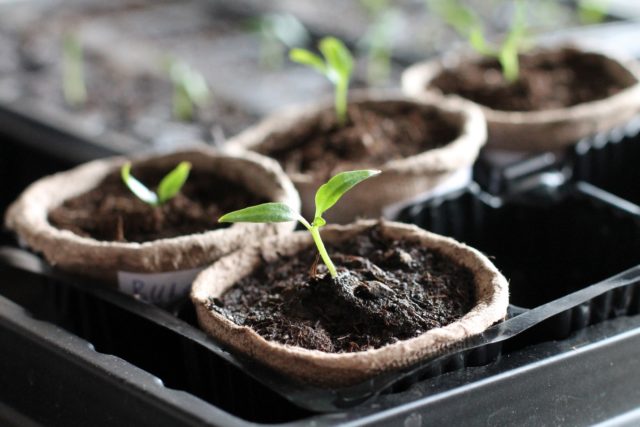
Seedlings need to be regularly ventilated and sprayed.
When shoots with 2-3 leaves appear, a pick is carried out.Anafalis pearl should be seated in separate containers. The flower grows very quickly, so it can soon be transferred to open ground.
How and when to plant in open ground
Transplantation to the site is carried out 3-4 weeks after the germination of the seeds. At this time, the seedlings should root well in the potting mix. It is recommended to transplant in open ground in warm weather, in the absence of precipitation.
Site selection and preparation
Despite its unpretentiousness, pearl anafalis is picky about the soil. It should be lightweight, breathable and moisture permeable. The nutrient content is not critical, but it is recommended to plant the flower in fertilized soil.
Anafalis pearl grows well in loamy and sandy soils. Rocky areas are also good for him. The acidity of the soil should be neutral - pH 6-7.
The bush is not afraid of strong winds and drafts. Therefore, it can be placed in an open area. The degree of illumination is also not important. Anafalis pearl grows well both in sunny and shaded areas.
Planting stages
Anafalis pearl is planted in separate holes or furrows. The top layer of the soil should be loose so as not to interfere with root growth. The depth of the planting pit is at least 20 cm.
Landing Algorithm:
- Prepare the landing pit.
- Place a drainage layer on the bottom.
- Sprinkle with loose soil.
- Remove the flower from the seedling container.
- Place the seedling in the groove.
- Cover with soil so that all roots are underground.
- Watering.
It is necessary that the plant is directed vertically upward. Before rooting, it can be tied up, thus creating additional support.
Care
The plant does not need special attention. Weeds growing nearby need to be removed periodically. Abundant watering is required only in the summer season, on the driest days. Waterlogging of the soil can harm the roots. Therefore, in a drought, watering is carried out 2-3 times a week, not more often.
During the period of heavy rainfall, loosening of the soil should be carried out. The procedure must be carried out with the utmost care, since the roots of pearl anaphalis can be close to the surface.
Diseases and pests
The flower is considered insensitive to infections. Excessively moist soil can cause significant damage to the plant, due to which the roots begin to rot. To prevent such a pathology, the plant must be planted in drained soil, periodically loosened and adhere to the watering regime.
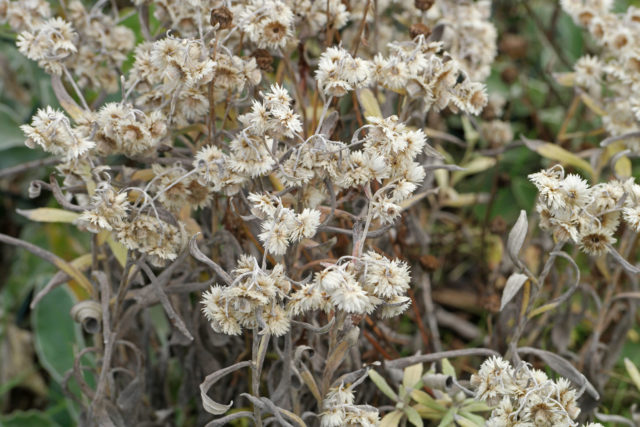
The main sign of root rot is the gradual wilting of the flower.
The leaves can be eaten by the caterpillars of the American butterfly. Such pests are common in the southern regions. In cold climatic zones, they are absent, since the larvae cannot stand the winter.
An effective method of dealing with caterpillars is insecticide treatment. Use preparations intended directly for leaf-eating insects.
Pruning
There is no particular need for such a procedure. Pruning is carried out only to give the plant a neat appearance. Yellowed leaves or shoots, dried inflorescences are removed from pearl anaphalis. The procedure is carried out when such defects are found. Full pruning is carried out in the autumn.
Preparing for winter
The plant is cold-resistant. It begins to fade only in the middle of autumn, even if there were already frosts earlier. During the period of regular precipitation, watering is interrupted. If autumn is dry, it is carried out no more than 1 time per week.
At the end of October, the leaves and buds of pearl anaphalis dry up. The bush is cut off entirely, leaving 3-4 cm of the stem from the surface of the ground.

It is not necessary to cover the anafalis specially for the winter, it can withstand frosts down to -34 degrees
It is not necessary to cover adult specimens. Young plants are recommended to be sprinkled with sawdust, dry foliage, straw or hay, providing protection from freezing.
Reproduction
The main way is to divide the bush. The procedure is carried out in spring or autumn. The bush is dug out entirely, after which the planting material is separated. "Delenki" are planted in separate holes, maintaining a distance of 30-40 cm. In the fall, the plant can be planted in a pot and transferred to an open area in the spring.
Another way is grafting. A healthy shoot is separated from a young plant, placed in a moist, well-fertilized substrate. It usually germinates very quickly. Then the shoot is transplanted into the prepared soil. This procedure is recommended in the spring.
Growing tips
Anafalis pearl does not require special care and has a low sensitivity to diseases and pests. Therefore, it is not difficult to grow it even in the absence of experience. A number of tips will help ensure stable growth and regular flowering.
Helpful hints:
- Anafalis pearl can be fertilized with mineral root dressings no more than 2 times per season.
- So that the roots do not experience a lack of liquid, the soil is mulched with tree bark in the summer.
- Seedlings can be planted next year, leaving them indoors for the winter.
- Once every 8-10 years, the bush should be transplanted to a new place.
- It is not recommended to plant pearl anaphalis next to other plants with fast-growing roots.
- To prevent the flower from crowding out other plants, it can be planted in deep containers without a bottom.
Application in medicine
Anafalis pearl refers to medicinal herbs. It is used in traditional pharmacology in the manufacture of medicines, as well as in traditional medicine.
This flower contains substances that accelerate the healing of wounds and ulcers. It also has antiseptic, anti-inflammatory and immunostimulating properties. Usually anaphalis is included in the composition of medicinal herbal teas.
Photo in landscape design
Anafalis pearl is a popular ornamental plant. It is used for single and group planting, decorating ponds, curbs and garden buildings.
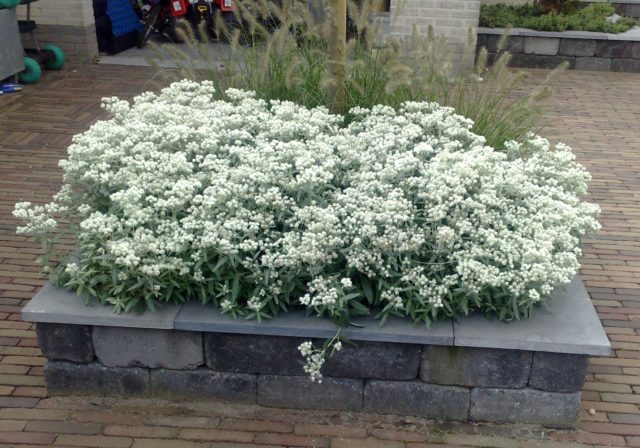
Anafalis looks beautiful against the background of other low-growing plants

The flower feels good in rocky areas where other ornamental plants do not grow

Anafalis is ideal for planting in flower beds and flower beds
There are a lot of options for using a plant in landscape design. But it should be remembered that flowers that are overly demanding on the composition of the soil should not be planted next to anaphalis.
Beautiful bouquets
Pearl anafalis is often cut to decorate premises. It is used in combination with other ornamental plants to create flower arrangements.
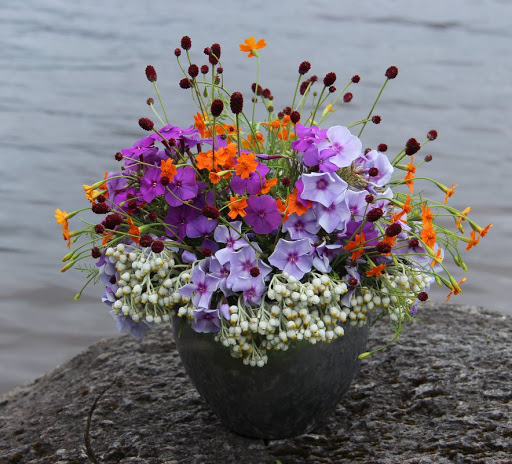
In the bouquet, anaphalis is in good harmony with burnets and phloxes.

Is the most beautiful dried flower for winter bouquets
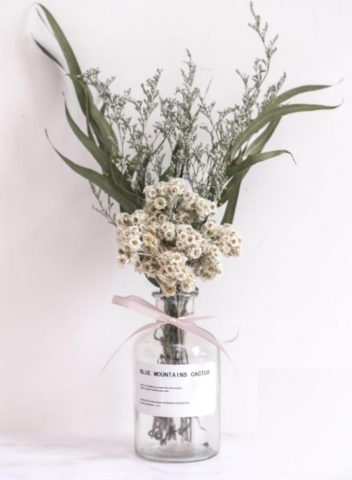
Anaphalis shoots are cut and hung in the shade to dry
Conclusion
Planting and caring for anaphalis pearl is not burdensome for gardeners with any experience. The plant grows well in different conditions, blooms regularly and for a long time. Anafalis has not only decorative qualities, but also medicinal properties, due to which it is actively used in medicine. The flower adapts well to climatic conditions, is resistant to cold and drought.








